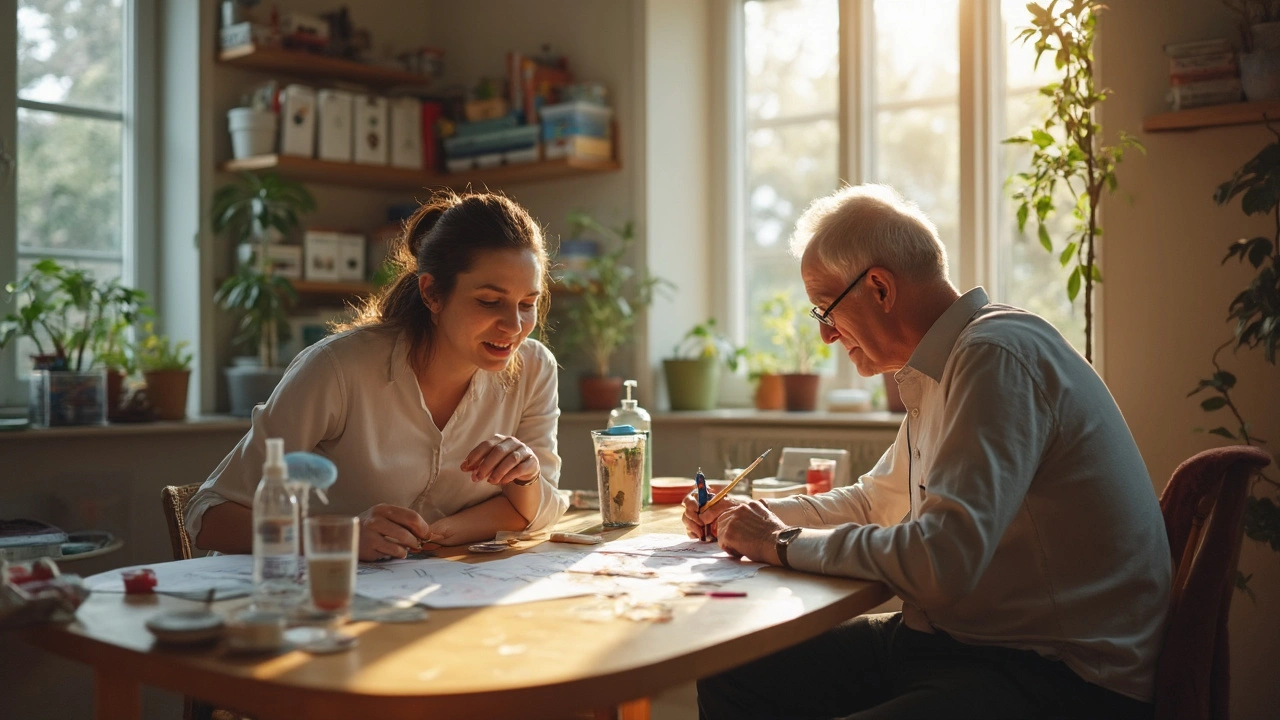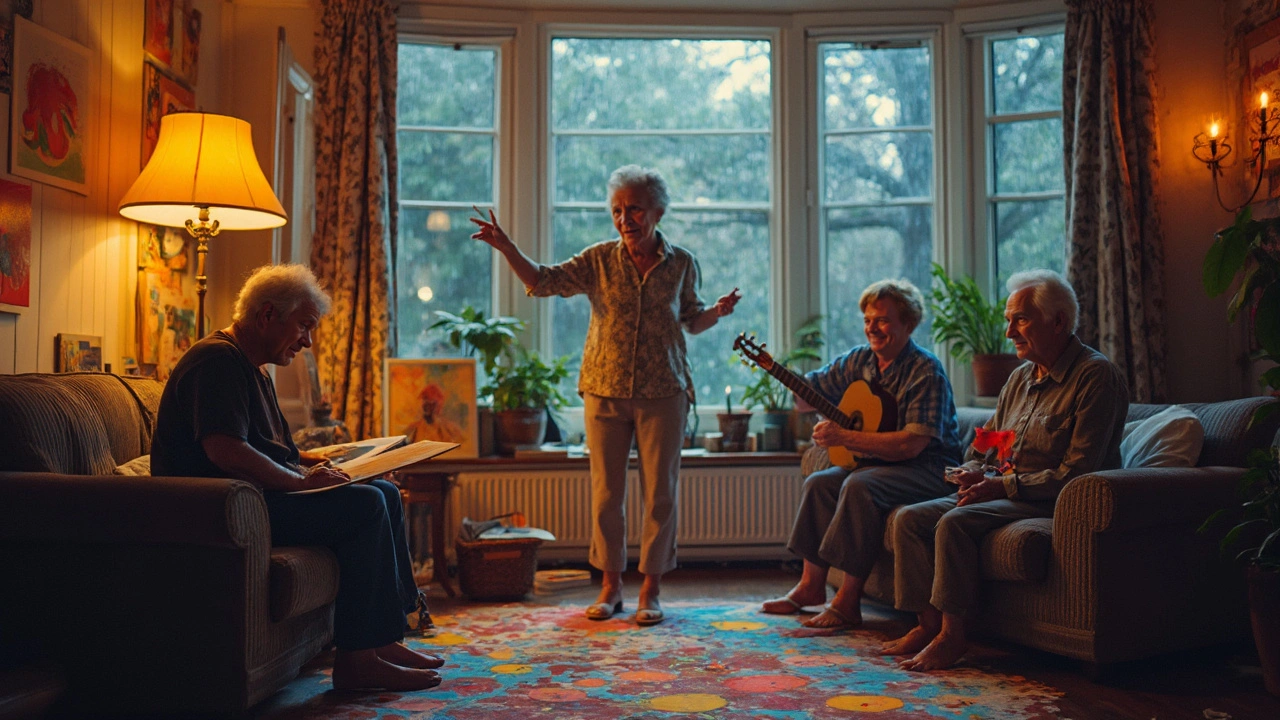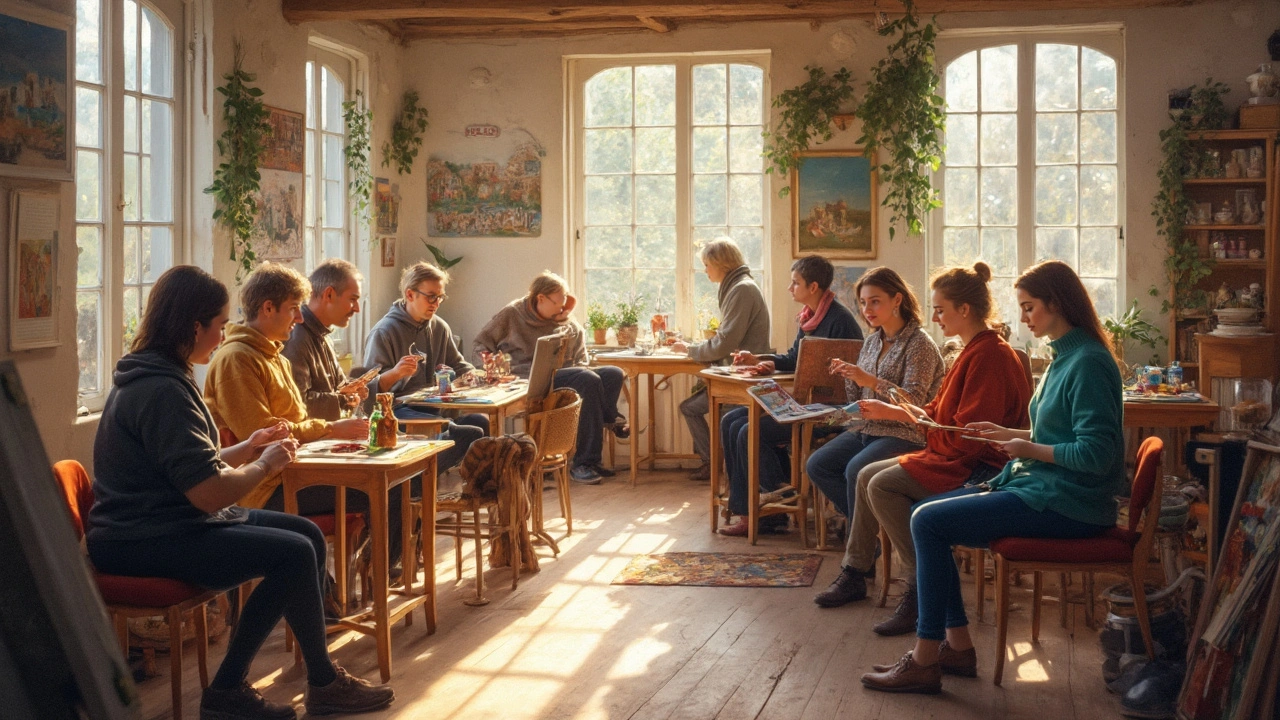Want a way to manage stress that doesn’t require long talks or pills? Art therapy uses making art to help you think, feel, and heal. You don’t need to be “good” at art. The goal is self-expression, not a masterpiece. People use art therapy for anxiety, trauma, grief, and simple daily stress.
Art therapy helps by shifting focus from rumination to hands-on activity. When you paint or draw, your brain relaxes and stress hormones drop. Clinical programs use art therapy for PTSD and chronic pain because it gives a safe way to process hard memories without having to put everything into words. Teens, veterans, parents, and older adults all report feeling calmer and clearer after sessions.
Sessions are led by a trained art therapist or a mental health clinician who uses art as a tool. That person helps you notice patterns in your work, connects images to emotions, and suggests techniques to move forward. If you’re nervous about talking, art can open doors slowly and gently.
A typical session lasts 45–60 minutes. The therapist will offer a prompt like "draw the part of you that worries" or "create a safe place." They’ll provide materials: paper, paints, clay, or collage supplies. You make something, then talk about it if you want. Sometimes the therapist won’t ask you to explain everything—your process matters more than the finished piece.
Sessions can be one-on-one or in a group. Group sessions add the benefit of shared experience and reduce isolation. Individual sessions let you go deeper and get personalized strategies.
Expect practical tools, too. Many therapists teach short at-home exercises you can use when anxiety spikes: a 10-minute color breathing drawing, a grounding collage, or a clay shaping practice to release tension in your hands and shoulders.
Simple art therapy exercises to try at home
- Timed sketch: Set a 5-minute timer and draw whatever comes up. No judging. This helps clear racing thoughts. - Safe place painting: Use three colors to paint a space where you feel calm. Keep it simple; use shape and color, not detail. - Clay squeeze: Mold a small clay ball while breathing slowly. Focus on the texture and motion to ease stress. - Collage your day: Cut magazine pictures that match how you felt today and glue them together. It’s quick and revealing.
Finding a therapist and practical notes
Look for a licensed art therapist (credentials: ATR, LPAT) or a mental health professional who offers creative work. Ask about experience with your issue, session length, and whether they accept your insurance. TRICARE may cover outpatient mental health when it’s medically necessary; check with your regional contractor for specifics. If cost or access is a problem, community centers and local arts organizations sometimes run low-cost group programs.
Art therapy is a practical, low-pressure way to work on emotions. Try a short exercise today and notice one small change: calmer breathing, clearer thinking, or less tension in your shoulders. That’s progress you can build on.

Discover how creative arts therapies-art, music, drama, dance, and writing-help process emotions, reduce anxiety, and foster healing. Learn the benefits, find a therapist, and start DIY practices today.
Read More
Evidence-based guide to creative arts therapies: what works, simple exercises, 30‑day plan, safety tips, and how to find a therapist in 2025.
Read More
Creative arts therapies are turning into must-have tools for dealing with stress, helping people manage anxiety and boost daily well-being. Art, music, dance, and drama therapy aren't just hobbies—they're proven ways to ease tension and reconnect with yourself. This article shows how these creative therapies work and why they're effective, even if you think you're 'not creative.' You'll get real examples, surprising facts, and step-by-step ideas to try at home, no art degree required. Discover an unexpected way to calm your mind and actually enjoy the process.
Read More
Creative arts therapies use art, music, dance, and drama to help people manage psychological disorders. This article looks at how these therapies can make a real difference for anxiety, depression, PTSD, and more. You'll find out how the process works, what science says, and get some useful tips for anyone interested in trying creative arts therapies. The focus is practical, clear, and based on real-world examples. Whether you're curious about new ways to support mental health or want to understand these therapies for yourself or a loved one, you'll get hands-on advice.
Read More